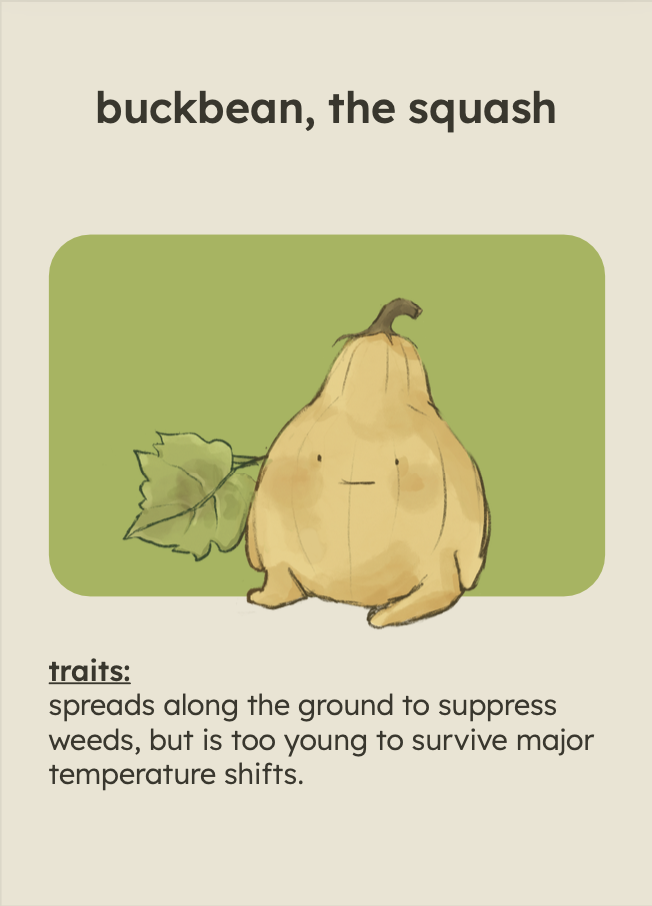
tending together
this project explores how storytelling can bridge the divide between humans and non-humans, creating more interconnected and reciprocal food-growing systems. by centering non-human actors—such as soil microbes, pollinators, and crops—as protagonists, it challenges the dominant view of these entities as passive backdrops, urging us to see them as active participants in our ecosystem.
drawing on amitav ghosh’s the nutmeg’s curse, this research critiques colonial efforts to desacralise nature, where non-western teachings that viewed trees, mountains, and other natural elements as animate were dismissed as “primitive”. as ghosh writes, “only once we imagined the world as dead could we dedicate ourselves to making it so”—a mindset that continues to shape common agricultural practices today. by reimagining food ecologies as vibrant care networks, the project challenges extractivist mindsets and places humans and non-humans in interdependent roles.

using a role-playing toolkit, participants are invited to embody characters such as mo, the earthworm, and buckbean, the squash—promoting empathy and understanding. they are also encouraged to engage in conversations around making kin—a term coined by donna haraway—where kinship is not just about kindness, but about the deeper, often complicated responsibilities that have lasting implications on our climate.






tending museum
as part of the intervention, participants contribute to a tending museum, a community archive where they create clay objects in response to future scenarios—such as designing tools to support pollinators during a drought. these objects, while soft-hearted in appearance, embody careful attention and speculative thought, putting into practice haraway’s concept of worlding—the co-making of multiple worlds with multiple non-human others.

fungal porridge bowl (c. february 17, 2025)

superfood mushroom (c. february 17, 2025)

flute for pest control (c. february 17, 2025)







